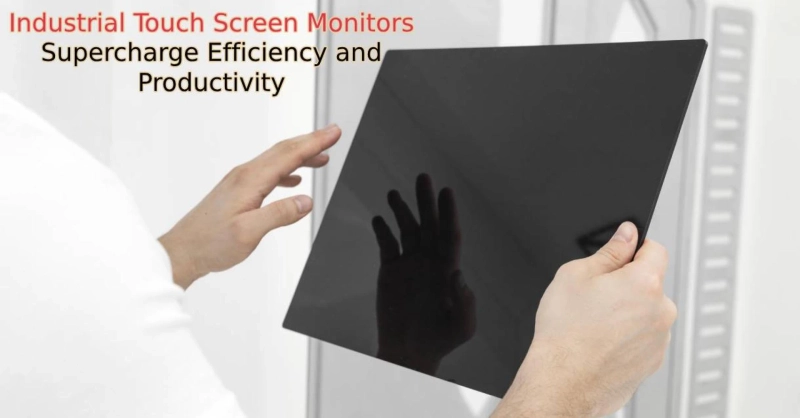In today's fast-paced industrial landscape, maximizing efficiency and productivity is paramount for success. Industrial touchscreen monitors have emerged as indispensable tools in achieving this goal.
Their intuitive interfaces, robust functionality, and seamless integration into various industrial processes make them a game-changer. Let's delve into how these innovative devices boost industry efficiency and productivity.
1. The Evolution of Industrial Touch Screen Monitors
Industrial touchscreen monitors have undergone a remarkable evolution since their inception. From rudimentary resistive touch screens to advanced capacitive touch technology, these monitors have become more responsive, durable, and versatile.
The Early Days:
Initially, industrial touchscreen monitors featured resistive touch technology, which relied on pressure to register input. While revolutionary at the time, these early models had limitations in accuracy and durability.
Advancements in Capacitive Technology:
The advent of capacitive touch technology marked a significant leap forward. Capacitive touch screens offer greater sensitivity and durability, making them ideal for industrial environments where reliability is paramount.
2. Enhanced User Experience
Industrial touchscreen monitors provide an unparalleled user experience, enhancing efficiency and productivity in various industrial settings.
Intuitive Interface:
With their user-friendly interfaces, industrial touchscreen monitors simplify complex operations, reducing the learning curve for operators and streamlining workflow processes.
Multi-Touch Functionality:
Incorporating multi-touch functionality allows for seamless interaction with on-screen elements, enabling users to perform multiple tasks simultaneously with precision and efficiency.
3. Streamlined Operations
Industrial touchscreen monitors streamline operations by centralizing control and monitoring functions, increasing efficiency and productivity.
Centralized Control:
By consolidating control panels into a single touchscreen interface, industrial monitors eliminate the need for multiple devices, reducing clutter and simplifying operation.
Real-Time Monitoring:
Real-time monitoring capabilities enable operators to track key performance metrics and respond promptly to deviations, minimizing downtime and optimizing productivity.
4. Enhanced Accessibility
Industrial touchscreen monitors enhance accessibility by providing remote access and customizable interfaces tailored to specific user requirements.
Remote Access:
Remote access enables personnel to monitor and control industrial processes from anywhere, facilitating proactive decision-making and troubleshooting.
Customizable Interfaces:
Industrial touchscreen monitors offer customizable interfaces tailored to individual preferences and operational needs, empowering users to optimize their workflow.
5. Durability and Reliability
Industrial touchscreen monitors are built to withstand the rigors of industrial environments, ensuring uninterrupted operation and minimal downtime.
Rugged Construction:
Constructed from robust materials and designed to meet stringent durability standards, industrial touch screen monitors can withstand harsh conditions such as extreme temperatures, vibration, and dust exposure.
Longevity and Reliability:
With a focus on longevity and reliability, industrial touchscreen monitors deliver consistent performance over extended periods, minimizing maintenance requirements and total cost of ownership.
6. Seamless Integration
Industrial touchscreen monitors seamlessly integrate with existing infrastructure and software systems, facilitating a smooth transition and maximizing compatibility.
Plug-and-Play Compatibility:
With plug-and-play compatibility, industrial touchscreen monitors can be easily integrated into existing industrial setups without extensive modifications or downtime.
Software Integration:
Compatibility with a wide range of software applications ensures seamless integration with existing industrial automation systems, enhancing functionality and performance.
Conclusion:
Industrial touchscreen monitors represent a cornerstone of modern industrial automation, empowering organizations to achieve unprecedented efficiency and productivity.
With their intuitive interfaces, streamlined operations, enhanced accessibility, durability, reliability, and seamless integration capabilities, these innovative devices are poised to drive innovation and competitiveness across industries.


